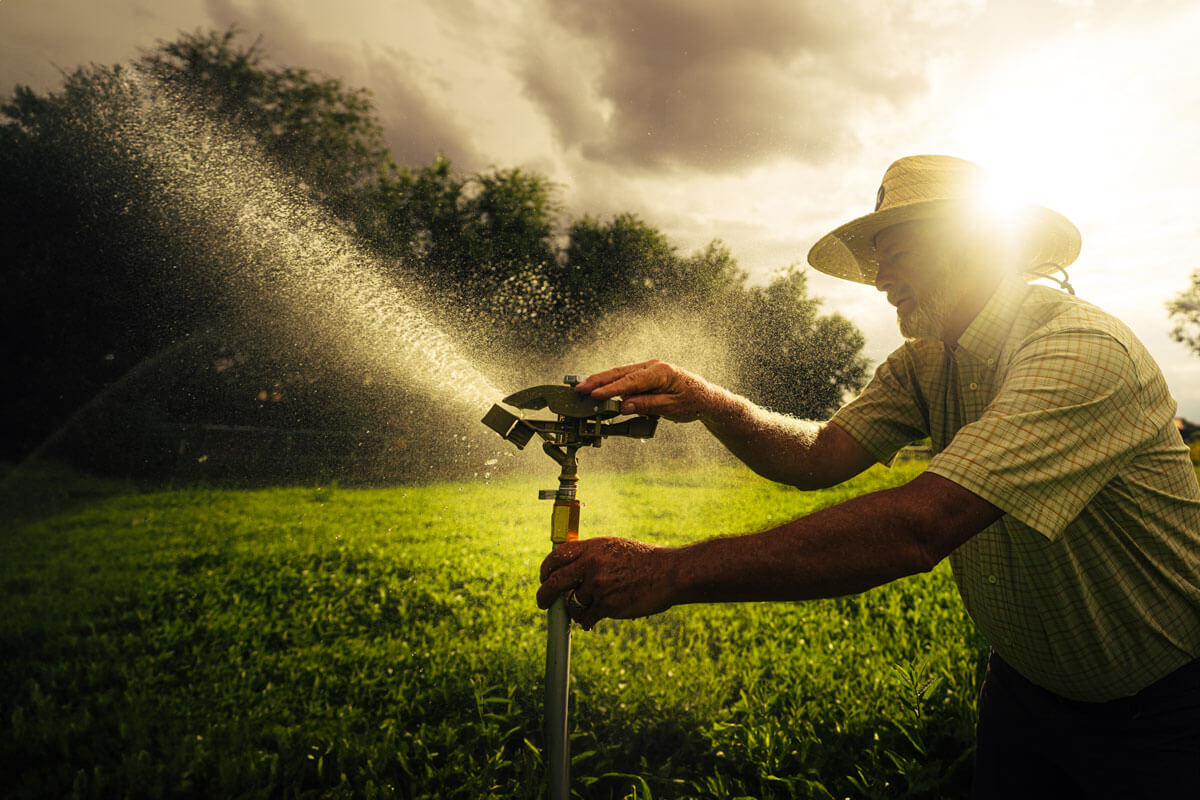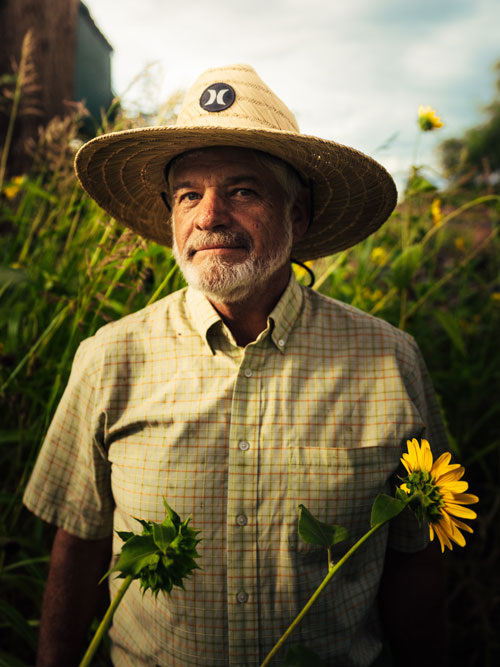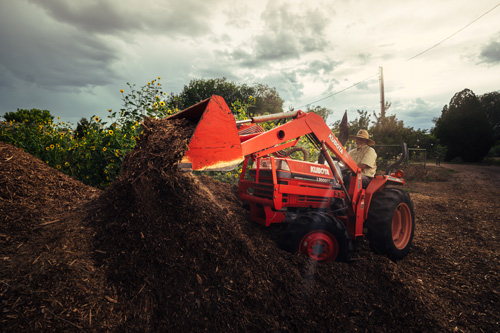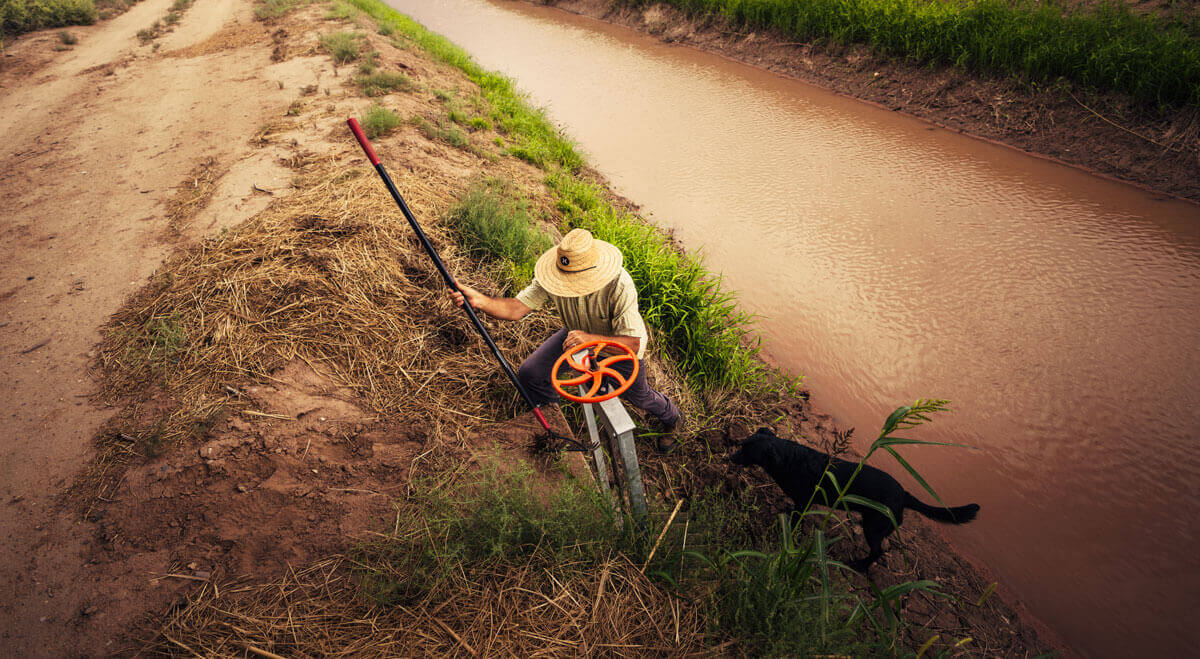Trading Policy Meetings for Tractor Rides: An Interview with Former State Engineer Mike Hamman
Sep / 2024

Mike Hamman’s first lessons in water management took place along a Taos acequia when he was 15 years old.
Hamman, who until recently served as New Mexico’s State Engineer, still remembers it well. His parents owned El Pueblo Motor Lodge, a roadside inn on the north end of town. When the time came to irrigate the large property, Hamman’s father would send him out to the ditch.
“I had to figure out a way to negotiate with folks and to make sure that when it was our time, we were able to get the water,” Hamman says. “I called it ‘ditch bank politics.’”
Those early negotiations drove a lesson home for Hamman that he has carried with him throughout his career: the water business is really a people business. From his early work on water infrastructure projects to the office of the State Engineer and, now, to the two-acre plot that he farms in retirement with his wife and adult children, he’s realized that water is about connection and compromise and working together to make something precious last.


A Better Future for Farmers – and For All of Us
About a decade ago, Mike Hamman and his family purchased a plot of land on the northside of Corrales, New Mexico, in hopes of one day starting a small family farm. Now newly retired, Hamman has thrown himself into farming, trading policy meetings for tractor rides.
He grows berries, melons, corn, and chile and watches stone fruits ripen in the orchard. Thanks to his career, Hamman knows water is not a resource to squander, so he’s set up what’s called a conjunctive use agreement on his property. Think of it as a promise to balance your use of groundwater and surface water in the most responsible way possible. In times of drought or when surface water dwindles late in the season, you reserve the right to draw on groundwater. In times of plenty, you use surface water instead, giving aquifers a chance to replenish.
Conjunctive use agreements are good for the planet, but they can be time-consuming and expensive to set up – a fact that Hamman laments. They require permits and infrastructure improvements and the use of multiple water systems, including wells, rainwater catchment, and ditches and canals. Hamman knows farmers need access to reliable water sources, especially in the face of a worsening climate crisis, but a solution isn’t viable if it’s too expensive for most farmers to implement.
As State Engineer, Hamman advocated for New Mexico’s family farmers, pushing for solutions that make it easier to weather times of scarcity – things like farm-to-farm leasing programs that allow water rights owners to lease unused water to neighbors or borrow from neighbors when they’re in need.
“We have to fundamentally change our agricultural policies, both from a climate and carbon-footprint perspective and also in thinking about food supply as the water situation becomes more dire,” Hamman says. (In New Mexico, experts anticipate a 25 percent reduction in available water over the next 50 years. Read more about that here.)
Farmers need other options, too, he says. Grant money shouldn’t only be available to “the big dogs” who have the time and resources to apply. Hamman also points to the federal Agricultural Conservation Easement Program, which protects land for agricultural use and pays farmers to implement more conservation measures, such as letting marginal cropland lie fallow to improve soil quality and crop yield.
The solutions, Hamman says, are there. It’s just a matter of building awareness and increasing access. That, he says, is where regional planning will make all the difference.

‘Where the River Meets the Road’
When Gov. Michelle Lujan Grisham appointed Hamman to the post of State Engineer in 2022, he immediately set to work on what he would later describe as his crowning achievement, the New Mexico Water Policy and Infrastructure Task Force. The project brought together water stakeholders from all over the state to identify challenges and present solutions.
A key recommendation: the revival of regional planning. Hamman had taken part in the state’s regional planning effort in 1987. It looked a bit different back then, he says. Most notably, it was underfunded and understaffed.
This time around, thanks to the Water Security Planning Act of 2023, regional planning is a robust, multi-step process with a goal of engaging every New Mexican in finding and then implementing local solutions.
In so many ways, as Hamman is harkening back to his early days on the banks of that Taos acequia, the state’s water planning process is, too, with neighbors coming together to give and take, making water last. To join your neighbors in building New Mexico’s water future, visit mainstreamnm.org/get-involved.
